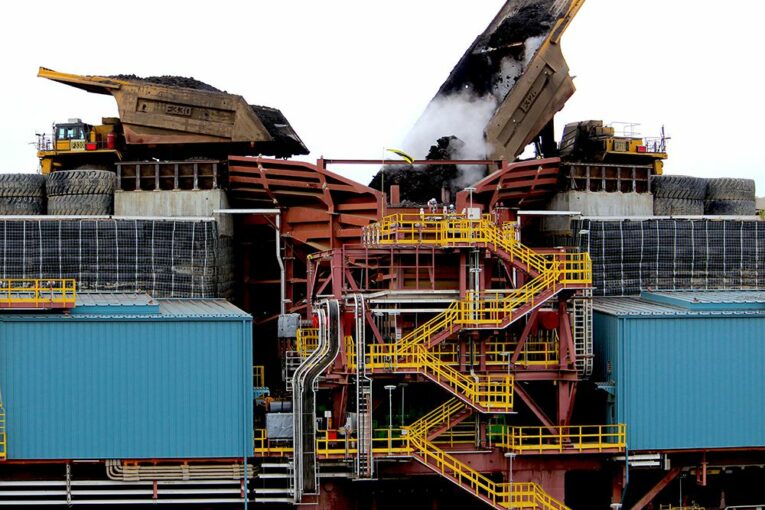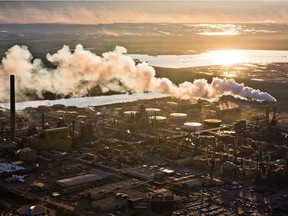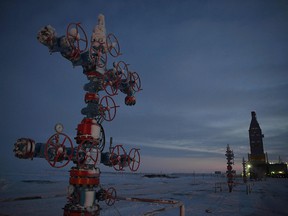
The Canada Energy Regulator doesn’t have a crystal ball to predict the future, nor do I.
But its new energy outlook report offers an intriguing glimpse of what the next three decades may hold for oil and natural gas producers in this country.
Released this week, the study shows plenty of change ahead as the Canadian energy complex evolves with new pressure points, decarbonization challenges and shifting consumption patterns.
Here are two themes that warrant a deeper look:
Don’t count the oilsands out
During the early days of the pandemic when crude prices tanked, oilsands production was slashed as companies scrambled to stem big financial losses.
Some observers wrote the oilsands off. One provocative headline asked: Has the coronavirus killed the oilsands industry?
Umm, no.
That narrative overlooked a couple of points.
Yes, it does cost a lot of upfront money to build a major new oilsands project. Between 1996 and 2015, capital investment in the oilsands hit $262 billion.
But once the capital is invested, these developments tap into proven long-life reserves that can churn out oil for decades.
Given the relentless focus of producers to cut costs since the 2014 price crash, operations have become more resilient to commodity price gyrations.
These factors set up the oilsands for moderate production growth in the coming years, according to the outlook in the Canada Energy Regulator report.
“In three decades’ time, Canada will be producing roughly the same amount of oil as it is today,” Rory Johnston, managing director and market economist at Price Street, said Friday.
“The Canadian oilsands has a very, very long life ahead of it, even under Canada’s current environmental outlook.”
Under the study’s base-case scenario, which reflects evolving climate policies, total Canadian oil production will grow by 16 per cent to reach 5.8 million barrels per day (bpd) in 2032, then dip to 4.8 million barrels by 2050.
The key to the outlook is the staying power of the oilsands.

Last year, raw bitumen production averaged three million bpd and it’s expected to rise — yes, rise — to almost 3.9 million barrels by the end of this decade. By 2050, the oilsands are still producing nearly 3.5 million bpd, according to this scenario.
And this isn’t triggered by some massive upswing in prices, but Brent crude falling from US$68 a barrel to $40 by the end of its forecast.
Some will argue the regulator’s scenario isn’t realistic because it doesn’t account for tougher climate policies needed to get to net-zero emissions by 2050, which is also the target of the largest oilsands companies.
“When you’re not anticipating success, in terms of Canada’s (climate) commitments, then it’s not surprising there’s a lot more room for oil and gas production,” said Dale Marshall of Environmental Defence.
(The report itself sees Canadian fossil fuel consumption dropping by more than 40 per cent by 2050.)
Yet, it’s worth remembering oilsands production came back quickly last year after energy demand rebounded, while U.S. output lagged.
Emissions per barrel in the oilsands are falling and companies are crafting plans to capture and store emissions underground. The study points out the use of solvents injected into oilsands reservoirs could cut operating costs by up to $3.50 per barrel.
While the days of building megaprojects appear to be over, additional output can be added through smaller expansions.
“It’s not necessarily that we’re going to grow gangbusters,” said Johnston. “We will more remain a stable ‘Steady Eddie’ while the rest of the industry declines more quickly.”
Natural gas pains
If the report highlights the resiliency of the oilsands, it appears less bullish for the prospect of increasing Canadian natural gas production, with a lot riding on the country’s ability to grow LNG exports.
The regulator’s outlook indicates total gas production, which averaged 15.5 billion cubic feet (bcf) per day last year, to remain flat until 2040.
Then, it drops to 13 bcf per day by 2050, well below the outlook contained in last year’s CER report.
“It’s slightly pessimistic. There was a belief that LNG projects would bring incremental growth to the basin and we don’t see that here,” said Ian Archer, associate director of North American natural gas for energy consultancy IHS Markit.
“It would represent a potential scenario where a lot of North American gas demand has gone away, and that assumes some pretty strong electrification.”
In its latest report, the CER anticipates exports of liquefied natural gas will prevent the production decline from arriving sooner, or from falling even faster. It sees almost 40 per cent of total Canadian gas output destined for international markets by 2050.
It’s curious that natural gas, which seems to be the logical bridge fuel to replace higher-emitting coal in power generation, now holds less promise than oil to increase output.
“What is driving the fall in production is really the price assumptions. So the price isn’t enough — the assumed price isn’t enough — to keep production up,” said CER chief economist Darren Christie.
(The forecast assumes benchmark U.S. gas prices will rise slightly from US$3 per million British thermal units to US$3.64.)

The report has LNG exports rising from 1.8 billion cubic feet per day in 2026 to 4.9 bcf a day by 2040, and then flattening out.
However, Canada has shown an inability to get many LNG projects to the finish line, unlike the United States. Only one project, the massive LNG Canada development, is now being built off the British Columbia coast.
The CER report also indicates that by 2028 B.C. will overtake Alberta to become the largest natural gas-producing province.
Despite the new outlook, gas producers believe there’s still growth ahead, with rising LNG production displacing coal use in Asia.
“There is no doubt we’re going to go through an energy transition,” said Phil Hodge, CEO of Pine Cliff Energy, an Alberta natural gas producer.
“Natural gas demand and use go up everywhere it’s been used in the world … I don’t see that slowing down.”
The CER says its new report is not intended to predict the future. It is, however, meant to be a “baseline for discussing Canada’s energy future.”
For the country’s oil and gas producers, the latest report has accomplished that objective.
Chris Varcoe is a Calgary Herald columnist.
You can read more of the news on source
